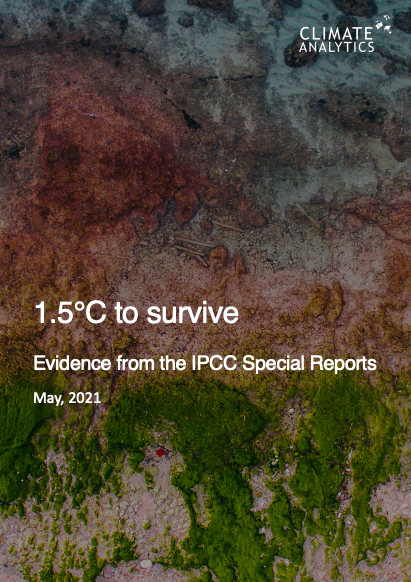1.5°C to survive. Evidence from the IPCC Special Reports
These briefings summarise the impacts of global warming at and above 1.5°C relative to pre-industrial levels. Key information is extracted from the Special Reports of the Intergovernmental Panel on Climate Change (IPCC) of its sixth assessment report cycle (AR6). These Special Reports are:
- The Special Report on the Impacts of Global Warming of 1.5°C (SR1.5) from 2018, and
- The Special Report on Climate Change, Desertification, Land Degradation, Sustainable Land Management, Food Security, and Greenhouse Gas Fluxes in Terrestrial Ecosystems (SRLand) from 2019.
- Special Report on the Ocean and Cryosphere in a Changing Climate (SROCC) from 2019.
These Special Reports represent an invaluable resource to understand the impacts of exceeding 1.5°C and new science published after their compilation has only contributed to an ever clearer picture of the grave consequences of exceeding that limit. In addition to the overview on climate impacts based on the Special Reports, latest information on global mitigation efforts and requirements to meet the 1.5°C limit are also included.

SUMMARY
The 1.5°C limit means we can avoid the worst of the climate crisis
The IPCC Special Reports SR.15 and SRLand are clear: limiting warming to 1.5°C can avoid the worst impacts of climate change. Compared to 2°C of warming, 1.5°C would see much less severe extreme events, for example mid-latitude heat waves would be 1°C colder on average. There would also be fewer disruptions to human and ecological systems – crop yield change would affect 158 million fewer people. Limiting warming to 1.5°C means substantially fewer people would be impacted by water scarcity, lack of food security and extreme poverty.
The 1.5°C warming limit is still within reach
Limiting warming to below 1.5°C is still possible but requires very urgent and rapid action now. Stringent emission reductions need to take place in the very near-term to halve current projections for 2030 CO2 emissions. 1.5C pathways require CO2 emissions to peak now and reach net zero by mid-century, with total greenhouse gases quickly following suit in the second half of this century.
Are we on track for 1.5°C?
The world is not on track for 1.5°C and most countries still lack sufficient climate targets. Recent updates to national climate targets presented at the US Climate Leaders’ Summit are a step forward to limiting warming to 1.5°C. The Climate Action Tracker calculates that the impacts of these updates reduce estimated end of century warming to 2.4°C, meaning we are closer to the 1.5°C temperature goal than ever before. These recent updates to national targets have reduced the emissions gap (the gap between current policy projections’ 2030 emissions and a 1.5°C trajectory) – by 11-14% (2.6-3.9 GtCO2e). However, a large gap of 20-23 GtCO2e remains.
––
Download file: http://1.5°C-Survive-evidence-from-the-IPCC-Special-Reports-final-1-1.pdf

